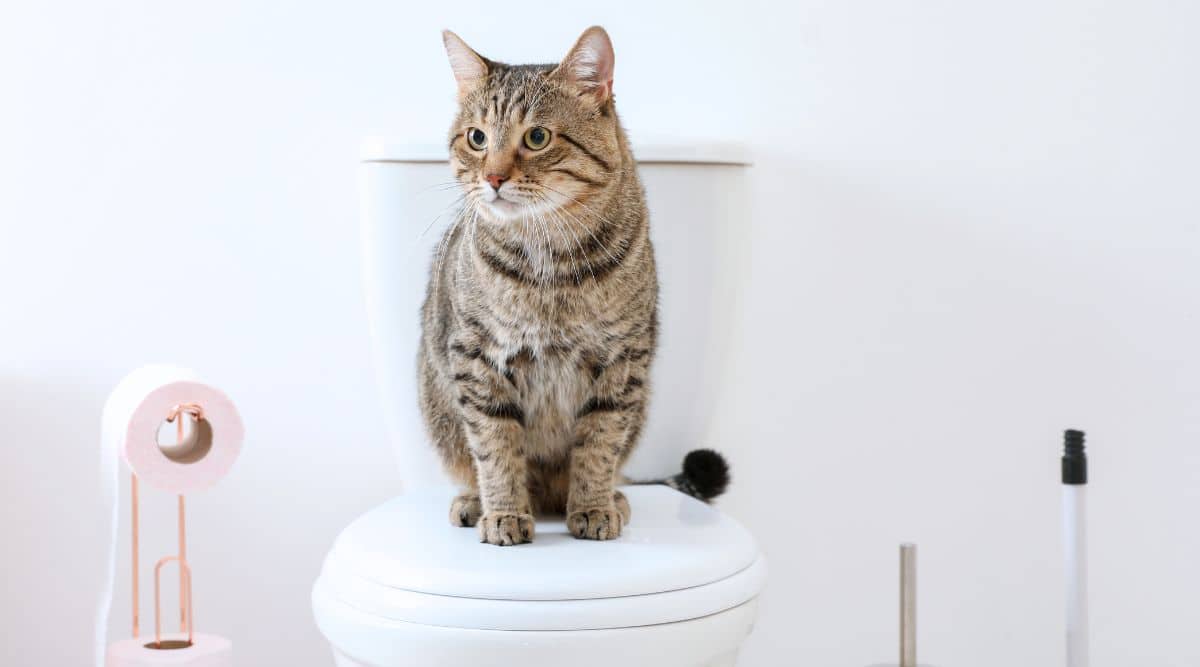Why You Should Avoid Flush Cat Poop Down Your Toilet - Crucial Information
Why You Should Avoid Flush Cat Poop Down Your Toilet - Crucial Information
Blog Article
Just about every person seems to have their personal opinions in relation to How to Dispose of Cat Poop and Litter Without Plastic Bags.

Intro
As feline owners, it's important to bear in mind how we get rid of our feline good friends' waste. While it might appear practical to flush feline poop down the bathroom, this technique can have destructive consequences for both the setting and human health.
Alternatives to Flushing
The good news is, there are safer and extra accountable means to take care of feline poop. Take into consideration the following alternatives:
1. Scoop and Dispose in Trash
The most usual method of taking care of feline poop is to scoop it into a naturally degradable bag and toss it in the garbage. Make certain to use a specialized litter inside story and deal with the waste immediately.
2. Usage Biodegradable Litter
Select naturally degradable cat clutter made from products such as corn or wheat. These litters are environmentally friendly and can be safely disposed of in the trash.
3. Hide in the Yard
If you have a backyard, consider hiding feline waste in a designated location far from vegetable gardens and water sources. Make sure to dig deep enough to prevent contamination of groundwater.
4. Set Up a Pet Waste Disposal System
Invest in an animal waste disposal system specifically made for feline waste. These systems make use of enzymes to break down the waste, minimizing smell and environmental influence.
Health Risks
In addition to ecological concerns, flushing cat waste can also pose wellness dangers to humans. Cat feces may contain Toxoplasma gondii, a bloodsucker that can cause toxoplasmosis-- a potentially severe ailment, especially for pregnant ladies and individuals with weakened immune systems.
Environmental Impact
Purging feline poop presents dangerous virus and parasites right into the water, positioning a substantial danger to aquatic communities. These impurities can adversely affect aquatic life and concession water top quality.
Final thought
Responsible animal possession expands beyond providing food and shelter-- it also includes correct waste management. By avoiding flushing pet cat poop down the bathroom and going with different disposal techniques, we can reduce our environmental footprint and safeguard human wellness.
CAN I FLUSH MY CAT'S POOP DOWN THE TOILET?
Always avoid flushing cat poop down the drain because not only could it potentially contain harmful parasites called toxoplasmosis, the litter could sit in your line and lead to a clog.
Plenty of waste gets flushed down your toilet every day, so what harm could a little cat poop and cat litter do? The answer is a lot, which is why you never want to send it down your drains.
Can I Flush My Cat's Poop Down The Toilet?One of the biggest problems with flushing your cat’s presents is the harmful parasites in your feline’s stool called toxoplasmosis. Extremely dangerous for humans, especially pregnant women and people who are immunocompromised, these parasites can cause a multitude of problems for unborn babies and even cause death or miscarriage if the infection happens early. That’s why you should always avoid touching cat poop. Also, water systems are not equipped to handle toxoplasmosis and are unable to destroy the parasite before it’s sent back into the environment, potentially jeopardizing the health of local area wildlife, specifically marine life.
Flushing cat poop could also lead to a future drain clog. Try as you may to eliminate any litter from it, there will always still be some stuck on there – and even if it says flushable on the label, it’s not! Cat litter is made up of bentonite clay, which has the tendency to harden when wet, creating a thick, almost cement-like quality. Cat litter that ends up down the drain can expand from the moisture in the pipes and then harden, blocking any wastewater. If you have a septic tank or a cesspool, it cannot handle cat litter either, no matter what kind. If it solidifies in the tank, in any of the system’s major parts like the inlet baffle, it’ll create some expensive problems.
The best way to dispose of cat poop safely is to scoop it into a bag and throw it into the trash – and ways of dealing with the smell include adding baking soda and replacing the box more.
Now that we’ve explained the potential harm that flushing cat poop can cause to you and your drains, you might be wondering the best way of dealing with it. Unfortunately, it’s the old-fashioned way of scooping it into a bag and then placing it into a trash can. They also make pet-proof trash cans that lock in the smell, so that you don’t have to always immediately take it out. If you’re tired of smelling the litter box after even just one use from your feline, there’s things you can do to help combat that smell. Adding baking soda to the litter will reduce smells, but just don’t add too much or your cat will no longer want to use the box. You could also replace the box more frequently, at least once a year, as those smells can just seep inside the scratch marks. Lastly, try changing to a new litter formula – some are better with smells than others.

We were made aware of that editorial on How to Dispose of Cat Poop and Litter Without Plastic Bags from a friend on a different blog. Kindly take the time to promote this blog post if you liked it. Thanks so much for taking the time to read it.
Request Free Estimate Report this page